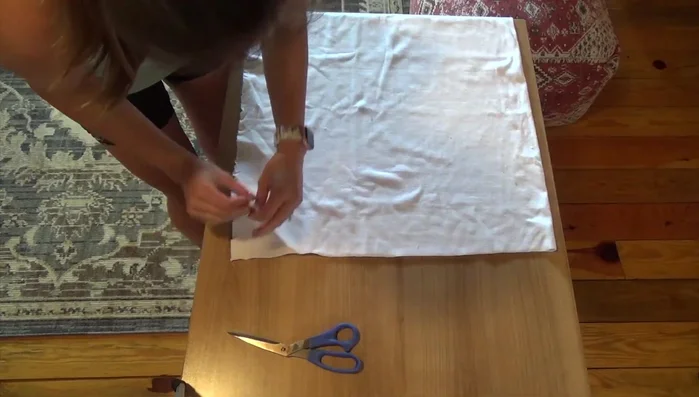Drooling babies are a fact of life, but dealing with the constant laundry that comes with it doesn't have to be a chore. Forget expensive, disposable bibs that end up in the landfill – embrace the world of DIY baby accessories! This tutorial will show you how to effortlessly create adorable and practical baby bibs using nothing more than old towels and a bit of your time. You'll be surprised at how quickly and easily you can transform simple bath towels into stylish, absorbent, and reusable bibs, saving money and reducing waste.
These DIY towel bud bibs are perfect for beginners, requiring minimal sewing skills and readily available materials. They’re incredibly absorbent, washable, and can be customized with fun patterns and colours to match your little one’s personality. Ready to get started and craft some super-cute, practical bibs? Let's dive into the step-by-step instructions below!
Preparation and Safety Guidelines
- Ribbing fabric
- Scissors
- Pins
- Sewing machine
- Zig-zag stitch setting
- Parchment paper
- Folgers coffee can lid (or similar circular object)
- Kitchen towel
- Always supervise your baby while wearing the bib, as it is not a safety device and could pose a choking hazard if parts come loose or are ingested.
- Ensure all stitching is secure and there are no loose threads or embellishments that could present a strangulation risk. Wash the bib before first use.
- Choose fabrics free from harmful chemicals and dyes, especially for babies with sensitive skin. Opt for absorbent materials like cotton.
Step-by-Step Instructions
Prepare the Collar
- Cut two layers of ribbing fabric simultaneously, aligning edges. Cut strips 2.5 inches wide.
- Cut the long ribbing strips into 11.5-inch sections. Remember to cut against the ribbing, not with it, to ensure proper stretch.
- Match the right sides of two 11.5-inch ribbing strips. Use a zig-zag stitch to sew them together.
- Fold the sewn ribbing strip in half lengthwise (slightly over an inch wide), aligning the seam. Pin, then fold in half again, pinning at the quarter marks to create a circle.




Prepare the Collar Prepare the Bib
- Trace a circle (using the inner circle of a Folgers coffee can lid as a template) onto parchment paper. Cut this out and use it as a pattern.
- Cut a standard kitchen towel in half (resulting in a 14x16 inch piece). Sew a seam along the cut edge to prevent fraying.
- Fold the towel in half to ensure evenness. Pin and cut out the neck hole using the circle pattern, positioning it 1-2 inches below the top edge.



Prepare the Bib Assemble the Bib
- Pin the collar to the bib, matching quarter marks and raw edges. Use pins pointing away from the circle.
- Sew the collar to the bib using a zig-zag stitch, stretching the ribbing evenly as you sew. Start at the back seam and continue around, readjusting the fabric every few inches to maintain an even tension.


Assemble the Bib
Read more: Sew a Lined Expandable Storage Bag: Easy Tutorial
Tips
- Cut ribbing strips against the grain for proper stretch.
- Use a zig-zag stitch for seam reinforcement, especially given the stress on the seam when stretching.
- Pin the collar to the bib with pins pointing away from the circle for easier sewing.
- Stretch the ribbing collar evenly while sewing it to the towel to maintain a smooth, even finish.








